
 |
Eager Space | Videos | All Video Text | Support | Community | About |
|---|

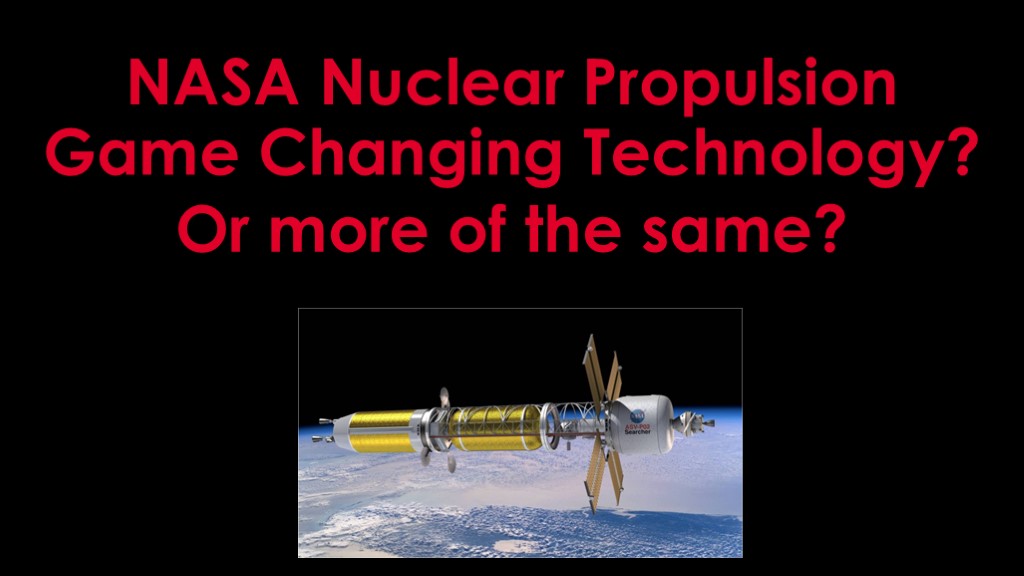
The last nuclear rocket engines were tested about 50 years ago. Since then, there has been a lot of talk - and a lot of claims - about nuclear thermal engines, and it's not clear what they can really do.
NASA has recently started a nuclear propulsion program.
What is the program about, and what can we expect from it?
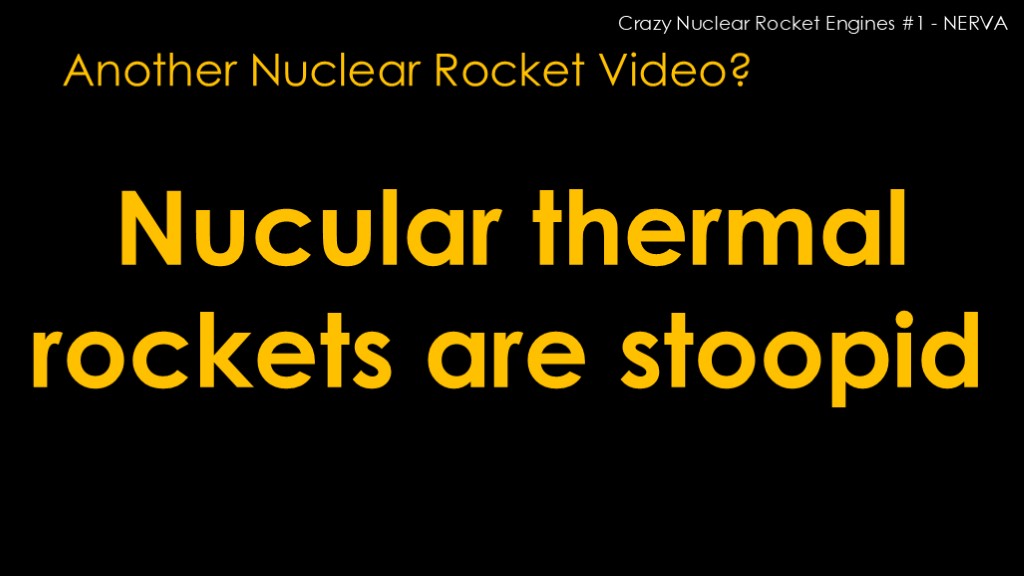
I'm sure some of you are saying, *Another* nuclear rocket video?
I've done a couple; the most recent on is linked in the corner if you care.
When I started on this one I figured that I could just put up a slide that says nucular thermal rockets are stoopid and be done with it. Not much of a video, really, and not a lot to motivate me to cover the same ground for a third time.
So I did some writing, got bored, and went on to other topics.
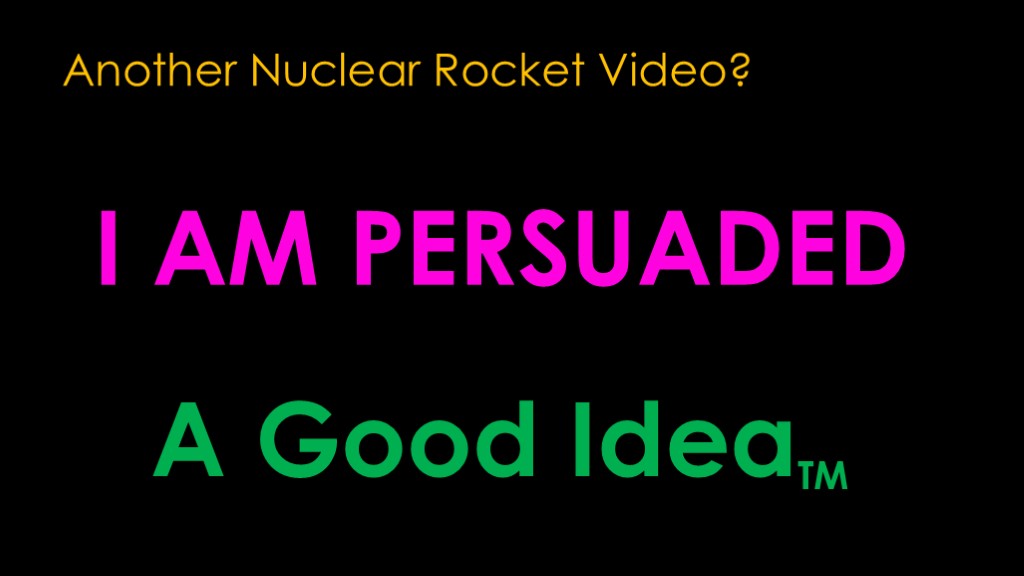
Then a few weeks later I came back to it, took another look.
And I... Am... Persuaded... that this program is a good idea...
Which is a stunning reversal. Don't get me wrong; I still think this is a fairly transparent effort to channel some of that sweet NASA money into the bank accounts of companies that have words like "nuclear" or "atomic" in their names.
But it's more than that.
Here are my reasons...
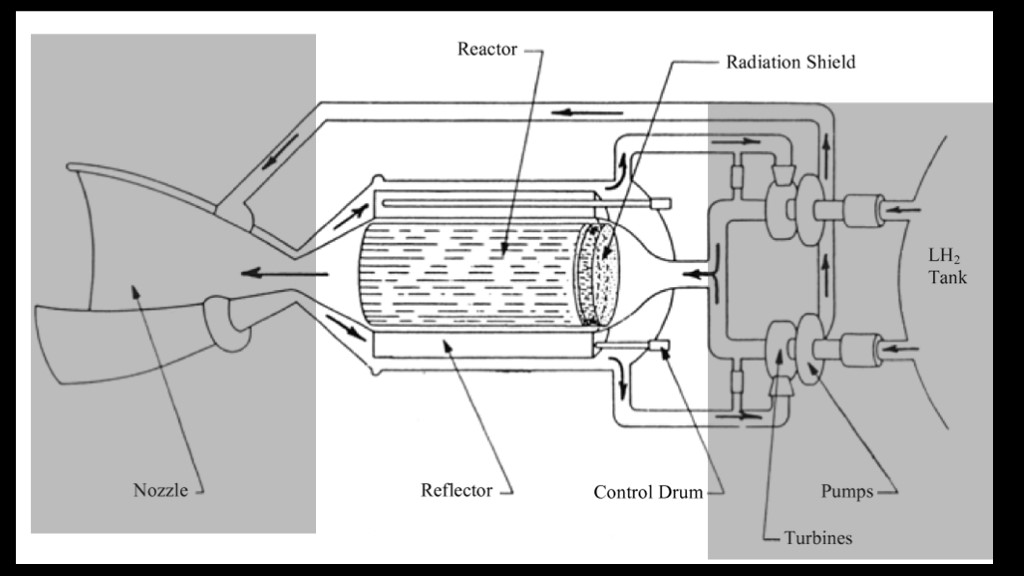
The first reason is that this program is not about building a nuclear rocket engine. Take away all of the rockety parts like turbo pumps and hydrogen tanks and nozzles; this is a program about building a nuclear rocket engine reactor.

The second reason is that this isn't actually a NASA program, though NASA is paying for it.
The program is being run by the US Department of Energy, which is the central point for nuclear activities in the US Government. DoE has very specific ideas on how nuclear projects should be done, and that means that this is about building a real reactor - and by real I mean practical to make, robust, safe, and all the other things you would want in any nuclear reactor. This is categorically different than the "here's a paper about a nuclear rocket engine" approach I've seen so often.
The DoE has chosen Idaho National Laboratory as the location where this work will be managed, and the operation of this laboratory is contracted to Bechtel.
If you read the documents, "contractor" means Bechtel, as they are coordinating the program and "subcontractor" means a company that will be participating in the program. It's a little confusing.
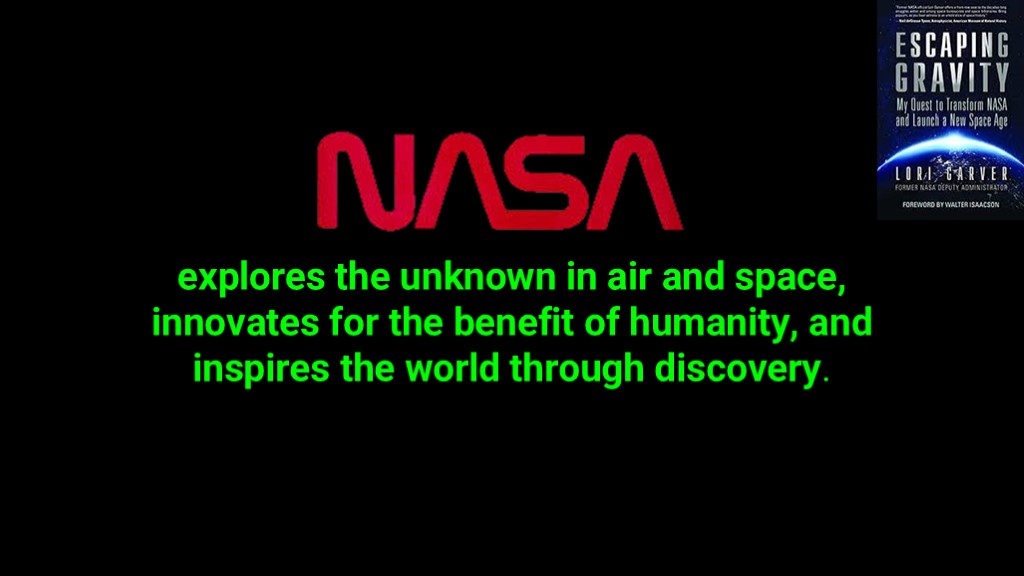
The third reason came after reading Lori Garver's "Escaping Gravity" book, where she talks in depth about NASA existing to do things for the country.
This is NASA's mission statement.
This is exactly the kind of research that NASA should be doing; whether nuclear thermal engines are practical is a significant unknown, and if it can be answered it will affect future planning.
So, yes, I am persuaded.

The details of the process are in this document that I'll link to in the description.
If you understand what NASA did with commercial resupply and commercial crew for ISS, this multi-phase approach will look familiar.
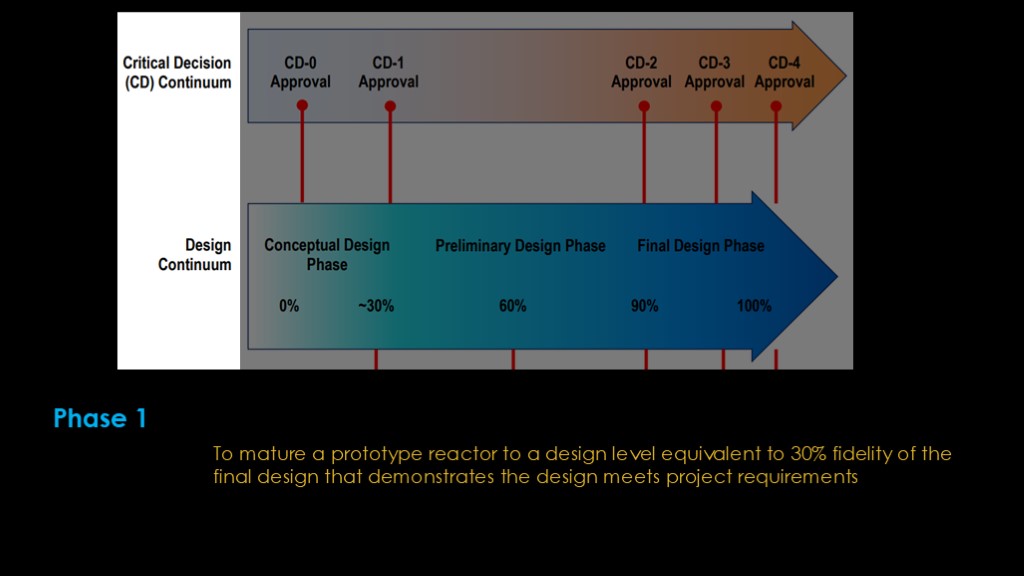
The project uses the standard approach used by Department of Energy projects.
The first part is conceptual design, also known as "phase 1" for this project. The goal is to complete the conceptual design to a 30% level - an "is this feasible" level of detail - and then complete a review.
Any subcontractors that complete that 30% review successfully will be eligible to move to the next phase.
https://www.energy.gov/sites/prod/files/2018/10/f56/EM_CNS%20_Engineering%20and%20Design_SRP_Final%20Version_EM%20Review_%20SEPTEMBER%2020....pdf

Phase 2 is known as the preliminary design phase, and will be awarded with a separate contract, very likely for much more money.
In it, the subcontractor needs to mature their 30% design to a 90% design to feed into the 90% design review.
Any subcontractor who successfully passes this phase will have the opportunity to participate in phase 3.
https://www.energy.gov/sites/prod/files/2018/10/f56/EM_CNS%20_Engineering%20and%20Design_SRP_Final%20Version_EM%20Review_%20SEPTEMBER%2020....pdf
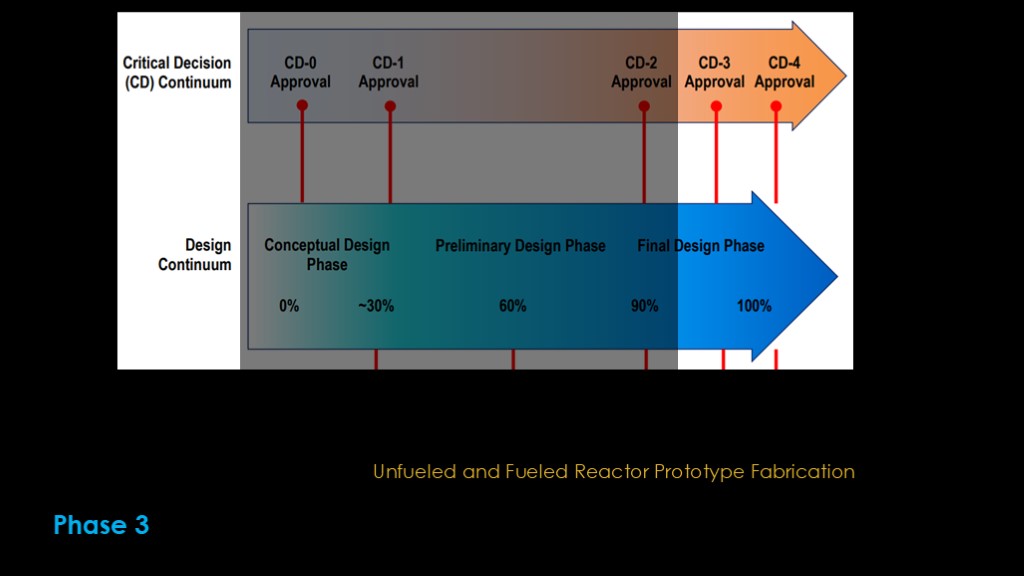
Phase 3 involves creating two prototype reactors - one unfueled and one fully fueled and ready for testing.
https://www.energy.gov/sites/prod/files/2018/10/f56/EM_CNS%20_Engineering%20and%20Design_SRP_Final%20Version_EM%20Review_%20SEPTEMBER%2020....pdf
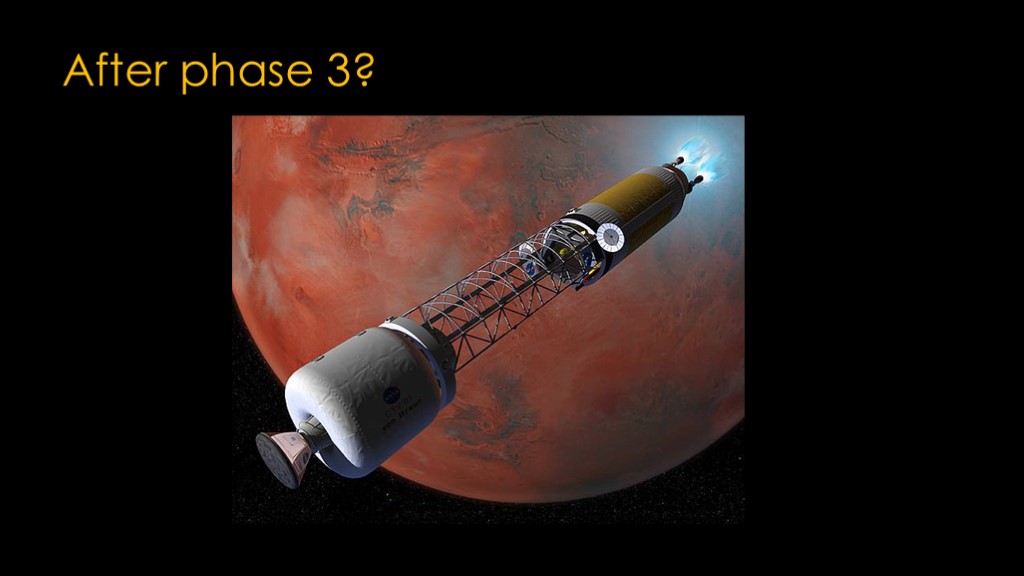
Successful completion of phase 3 presumably means NASA would be looking at flight hardware to be tested in orbit.
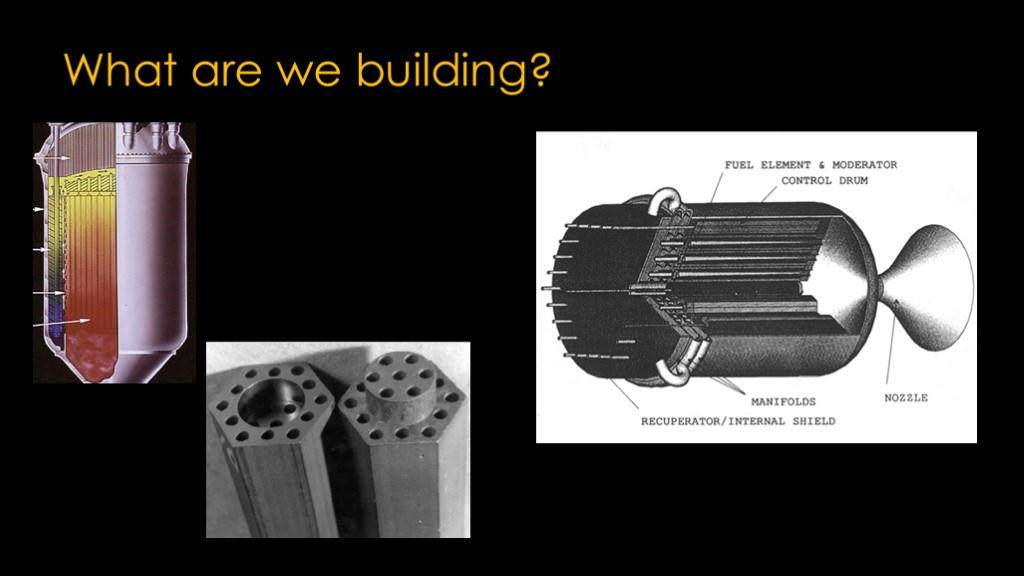
NASA has not specified a reactor design, though there are a few obvious possibilities. I expect a NERVA-like design, but I'm really hoping one of the contractors will try a pebble bed design.
There are a number of requirements the design must meet.
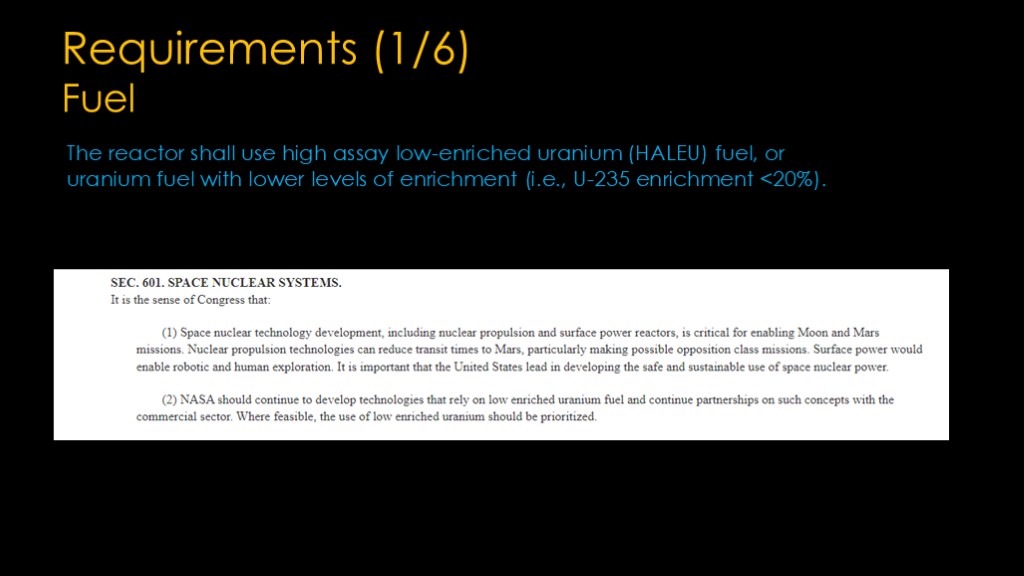
The first requirement is that the engine will use uranium that is 5-20% uranium 235. This precludes some of the early designs that used uranium that was highly enriched, to more than 90% uranium 235. You can be sure that everybody is going to specify 20% as going lower than that just makes their lives harder.
Interestingly, the congressional authorization that set up this program said, "use low enriched uranium if feasible", and NASA decided to make that a requirement. I view that as a good thing.

The second requirement is to use hydrogen as a propellant, though "reaction mass" is perhaps a better term than propellant as it is heated, not burned.
No other comment here as hydrogen is the only propellant that is going to meet the other requirements.
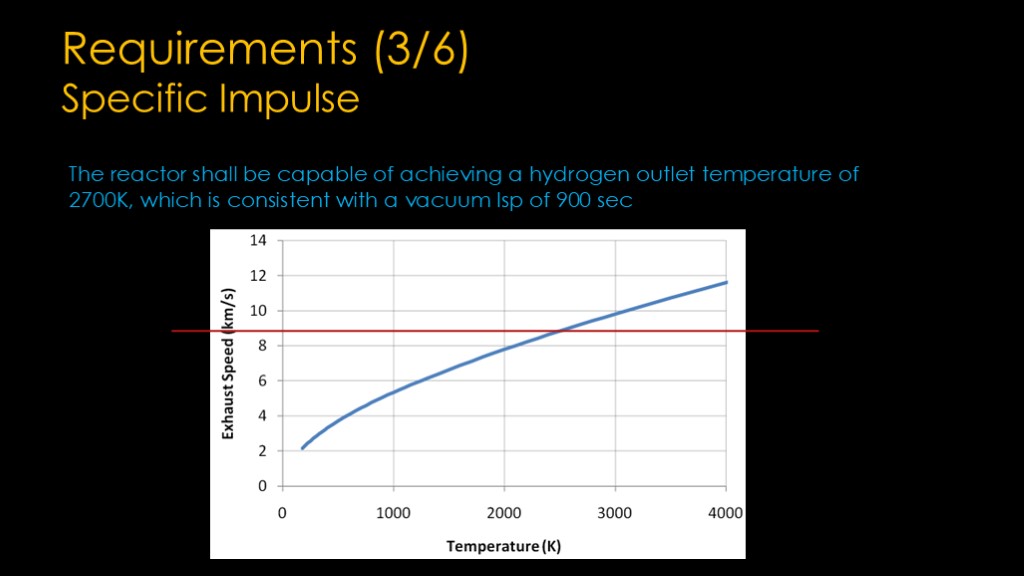
One of the possible advantages of nuclear thermal engines is their higher specific impulse - which gives them better fuel economy.
The goal is to reach a specific impulse of 900 seconds - roughly double what the best chemical rockets can do - and that requires a reactor outlet temperature of 2700 Kelvin to achieve the required exhaust velocity.
900 seconds Isp translates to 8829 meters per second in exhaust velocity, and that requires roughly 2500 kelvin, so 2700 should get them to that level of performance.
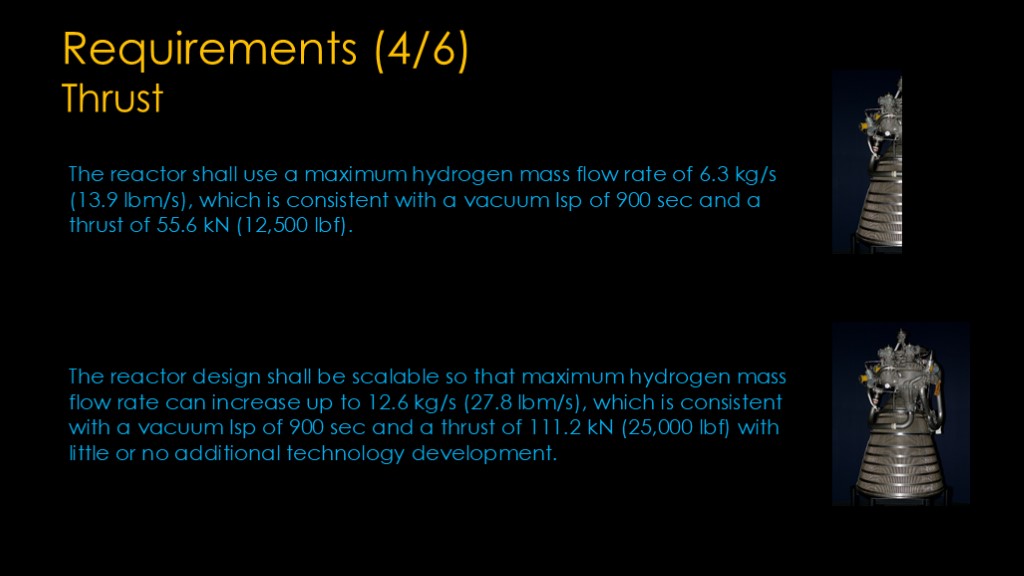
The thrust requirement is 55.6 kilonewtons. They express it as a hydrogen flow rate to ensure that the engine preserves the target specific impulse even at the maximum thrust.
This is almost precisely half of the thrust available from an RL-10 engine.
That's pretty small as engines go.
There is a second thrust requirement, of 111.2 kN
Read this as "you should be able to scale your engine up to RL-10 size".
I'm not excited about this second requirement.
I can see an argument for starting small - a program to develop a smaller reactor is likely cheaper. But the way that you scale up to a bigger size is by making the core longer or fatter, and that affects both the reactor design and the rest of the rocket engine.
The big problem here is that I don't understand what is required to meet this part of the requirement. A contractor could just do both designs, and that would be great, but what if they choose not to do that? Do they just promise that it will work in a bigger version with little or no additional technology development.
If NASA wants an RL-10 sized engine, they should just specify that as the size. We all know what happens with a "block 1, block 2" approach.
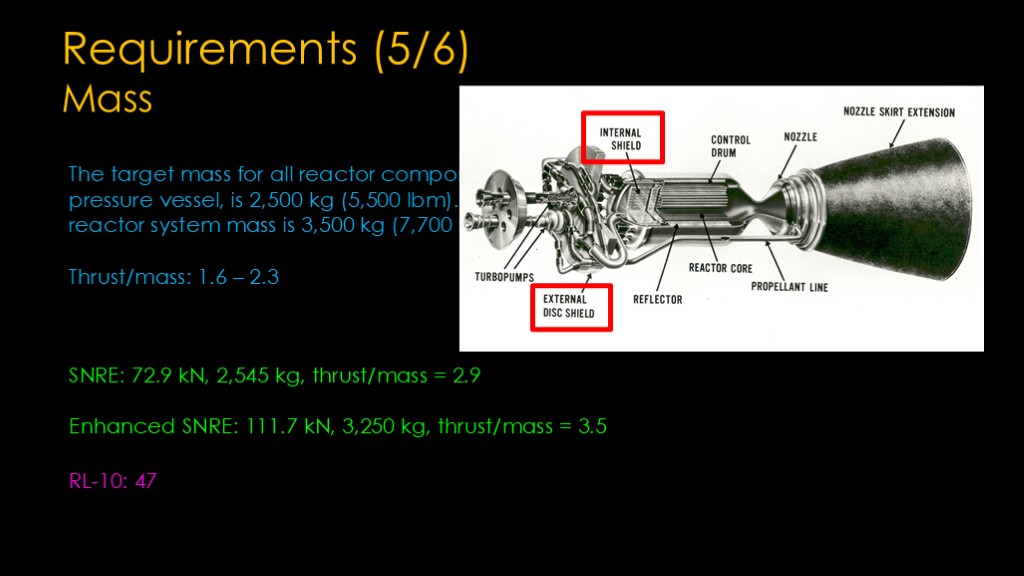
NASA will accept a reactor that masses 3,500 kg but hope that it will be as light as 2,500 kg.
The mass numbers here and those quoted for other nuclear thermal designs tend to be pretty weasely as nobody has built real systems with them. We have actual numbers from NERVA but they were never designed to be light so that doesn't matter.
For this design the minimum thrust/mass is 1.6, but they hope for 2.3.
We can compare to a couple of proposed engines; the SNRE that was commonly referenced at NASA comes in at 2500 kg for 72.9 kilonewtons of thrust for a 2.9
and the enhanced SNRE at 3250 kg for 111.7 kilonewtons of thrust for a 3.5
This requirement really disappoints me; many nuclear thermal advocates talk about light reactors with advanced materials, and this is quite a bit worse than the ones that were proposed 20+ years ago. Note that does not include the rockety parts - the turbopumps, the nozzle, etc. - though those are fairly light.
The majority of nuclear thermal reactor designs use an internal shield inside of the reactor vessel to reduce the amount of radiation exiting the pressure vessel and a larger external shield outside the reactor. Those are likely to be heavy structures. There is a list of reactor components that should be part of the mass estimate and shielding is not listed.
I'd be happier if there was a requirement for the maximum radiation coming out of the reactor, so that the shielding mass would count and the designs would be on equal footings.
Just to compare, the RL-10 has a thrust/mass of about 47.
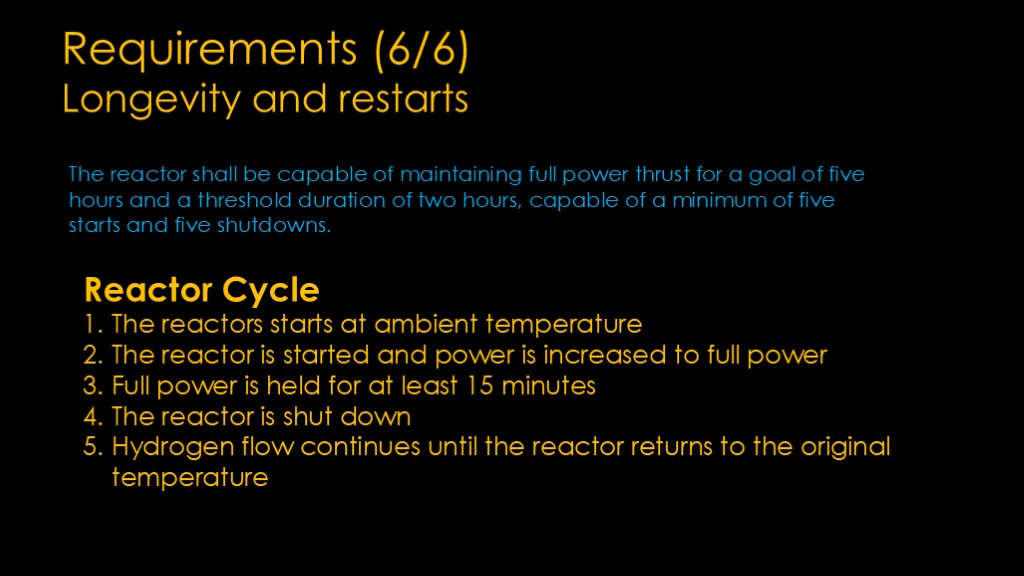
The reactor must maintain full power thrust for 2 hours minimum, preferably for 5 hours. This is total operational time across multiple starts.
It should also be capable of 5 starts and shutdowns.
This is unfortunately not well defined. A start is defined as going to "operational power levels", but the word "operational" is not defined. A shutdown is defined as occurring from any power level.
Why is this important?
During NERVA, there were ongoing problems with erosion of the fuel elements due to the hot hydrogen. There were also issues with differing expansion rates causing cracking in the core.
These requirements should therefore be designed to verify that the reactor doesn't have these issues.
I would expect it to be something like:
A reactor cycle is:
The reactor starts at ambient temperature (earth ambient or space ambient?)
The reactor is started and power is increased to full power
Full power is held for at least 15 minutes
The reactor is shut down
Hydrogen flow is continued until the reactor returns to the original temperature.
That would much better simulate the use of the reactor in real-world conditions.
As for reaching these requirements, I suspect that this will be the area where going beyond NERVA will be most important.
The longest that a NERVA ran at full power was just over an hour, and that was at about 2500 Kelvin.
There have been many start/shutdown tests - XE prime did 28 tests - but they only ran up to about 1300 Kelvin for many of them.
https://www.osti.gov/servlets/purl/4257093
https://www.osti.gov/servlets/purl/822135
https://inis.iaea.org/collection/NCLCollectionStore/_Public/05/105/5105500.pdf?r=1

There are many deliverables that go along with the requirements. The deliverables show that the Department of Energy clearly has a very clear idea of how to build well-behaved reactors
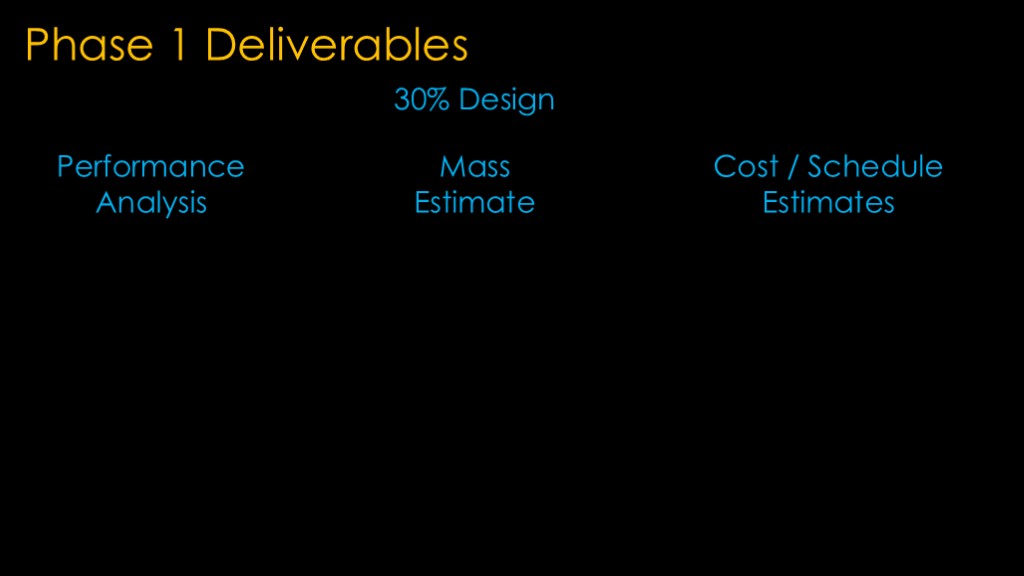
First, there is the actual 30% design of the reactor.
Then there is a performance analysis of the reactor - does it meet the requirements, what are the stresses during startup, operation, and shutdown, and what will keep it from blowing up if your launch vehicle drops it in the ocean.
There is a mass estimate - a very detailed mass estimate - of all the parts of the reactor.
And then there are cost and schedule estimates. How much will it cost to build the reactor, and how long will it take?

They must define the interfaces between the reactor and the rest of the engine, describe the hydrogen flow, how the proper balance between nozzle cooling and turbopump power is achieved, and which aspects of the system are most likely to cause issues.
There is a description of instrumentation and control.
The purpose of the control analysis will be to provide information that supports development of a system that safely controls the reactor and engine systems when they are linked together. The fission rate of the reactor is dependent upon the core design, the control drums that are used to control reactivity, the flow of the hydrogen - which also affects reactivity - and other factors.
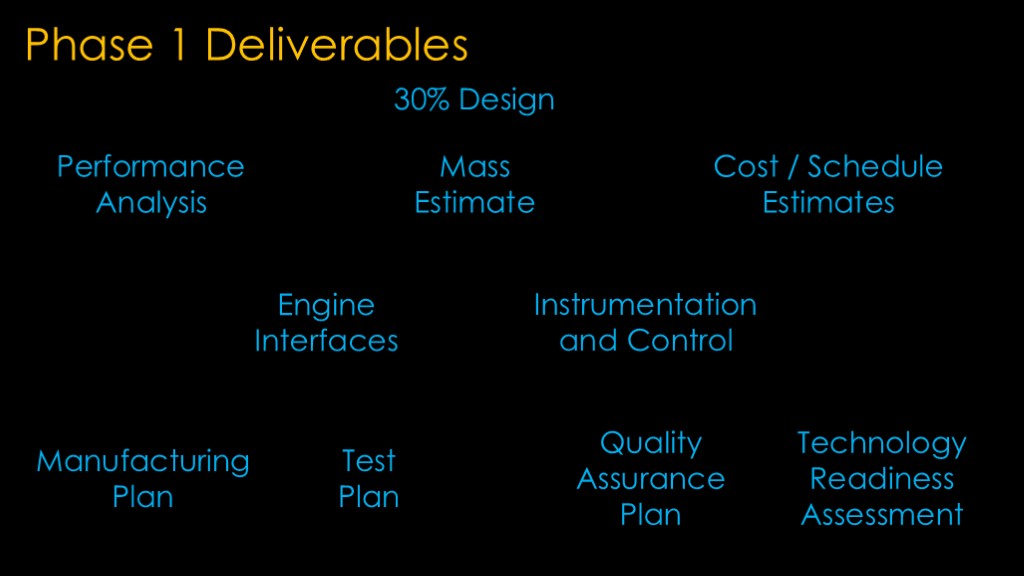
There is a reactor manufacturing plan that describes how to build the reactor, how it is assembled into an actual engine, what facilities are needed.
There is a test plan that describes how both the components and overall reactor will be tested, and what facilities might be used.
There is a quality assurance plan, which will describe what requirements there should be for testing nuclear thermal reactors for spacecraft propulsion.
And finally, there is a technology readiness assessment, which details what technology development is required for this design to work and how the subcontractor will get there.
This is a large number of deliverables and goes into much more depth than any of the designs that I've seen.
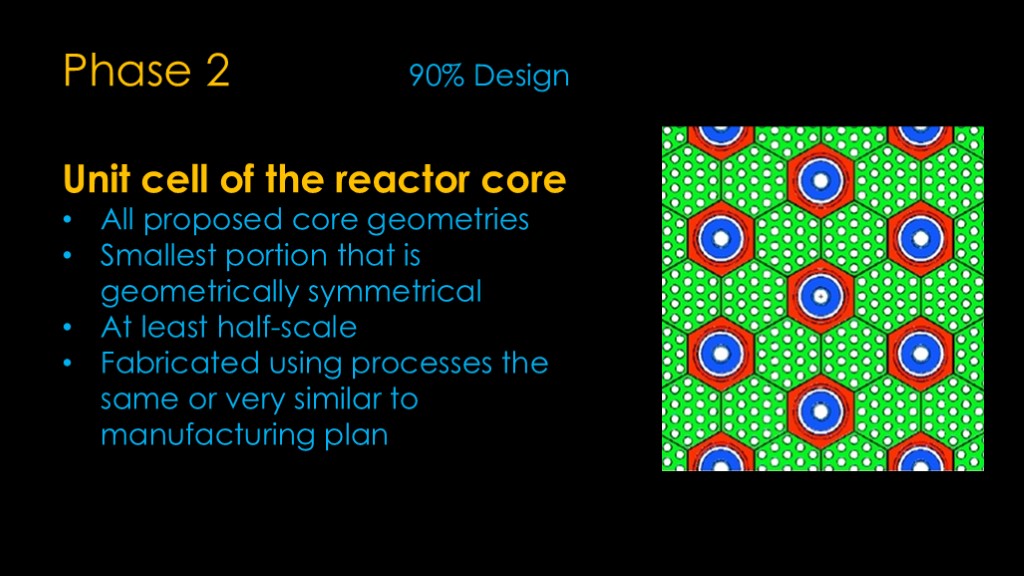
Phase 2 takes the 30% design and pushes it to a 90% design, ready for another big review process.
In addition, it requires the construction of a unit cell of the reactor core, basically enough of the core to be representative of the overall core design, and at least half scale.
In a nerva-style core, it would include the green fuel rods with hydrogen channels in them and the red and blue tie rods that structurally hold the core together. This is a test of "can you build this thing using the approach you say".

These unit cells will be tested in operational reactors such as the Transient Test Reactor at Idaho National Laboratory or the High Flux Isotope Reactor at Oak Ridge National Laboratory.
The point of this testing is to heat up the unit cells in a real reactor, run hydrogen through them, and verify that they are well-behaved under actual reactor conditions
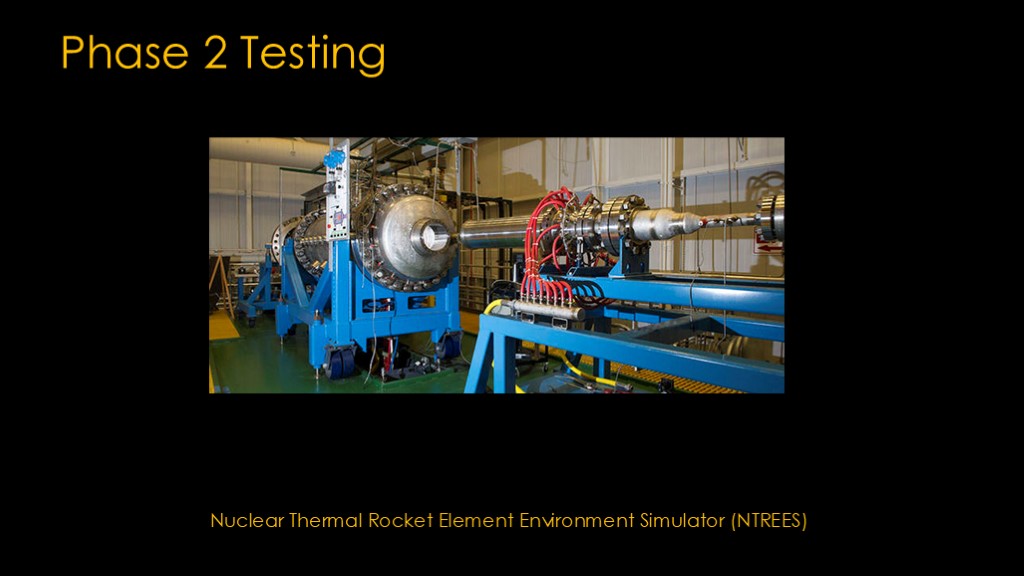
They will very likely also be tested in NASA's NTREES simulator, which heats hydrogen up to operating temperatures - 2700 kelvin - and verifies that the core designs can tolerate it.
This is very useful as the cores do not become radioactive and can be carefully examined.

Finally, phase 3 gets to real reactors...
First a reactor that is mostly identical to the final one but with the uranium replaced with either depleted uranium - the leftover from the enrichment process - or natural, unenriched uranium.
It's a reactor you could plug into the actual engine and everything would fit, except that it just wouldn't work.
And then there's the final product, a reactor that is complete including the appropriate enriched uranium.
The fueled reactor prototype shall be suitable for use in nuclear testing of the reactor designed for demonstration of the ability to control the reactor under a variety of normal operation and accident conditions.
It's designed to be integrated into a rocket engine for real testing.
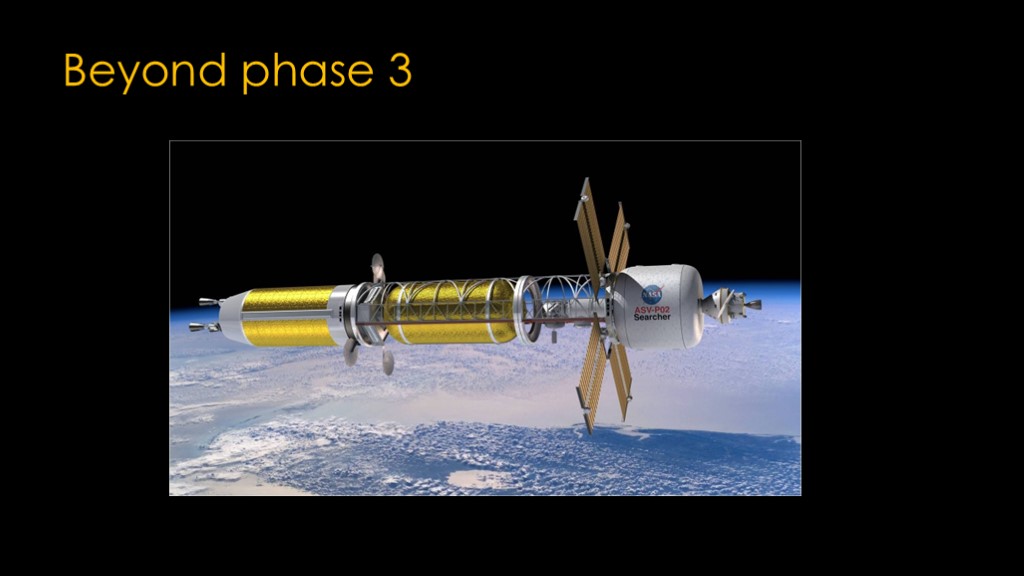
Beyond phase 3 probably means an on-orbit test.
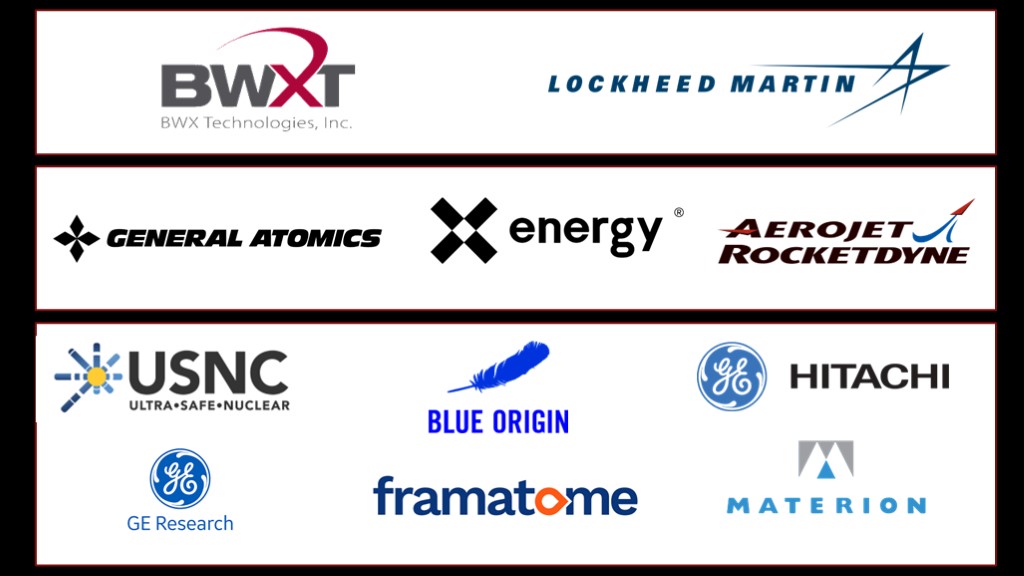
What companies are involved?
One of the requirements is that you need to include a company that - in the department of energy's opinion - knows how to deal with enriched uranium, so we will see companies that we aren't used to seeing the space world.
NASA awarded contracts to three groups of companies.
The first partnership is BWX technologies who are suppliers of fuel components and fuel, and Lockheed martin would obviously do the spacey part.
Next up we have general atomics, X energy, and Aerojet Rocketdyne. A traditional nuclear company, a new nuclear company, and an experienced rocket company.
Finally, the last partnership is a big group. A new nuclear company, blue origin presumably for engine skills, GE Hitachi nuclear, GE research, Framatone (a French reactor company) and Materion, a high-performance materials company.
I frankly don't see a good way to handicap these companies until we see what comes out of phase 1, but I'm happy there are three groups.
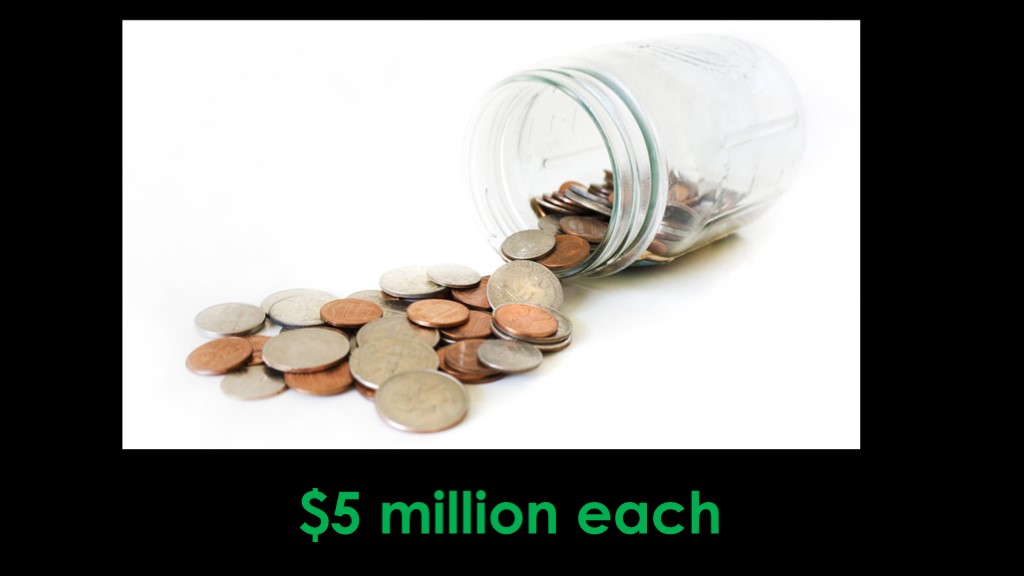
Perhaps the biggest surprise to me is that the phase 1 awards are only about $5 million each. There's a lot of detailed engineering work to be done for a small amount of money, so presumably these groups hope to see a lot more later.
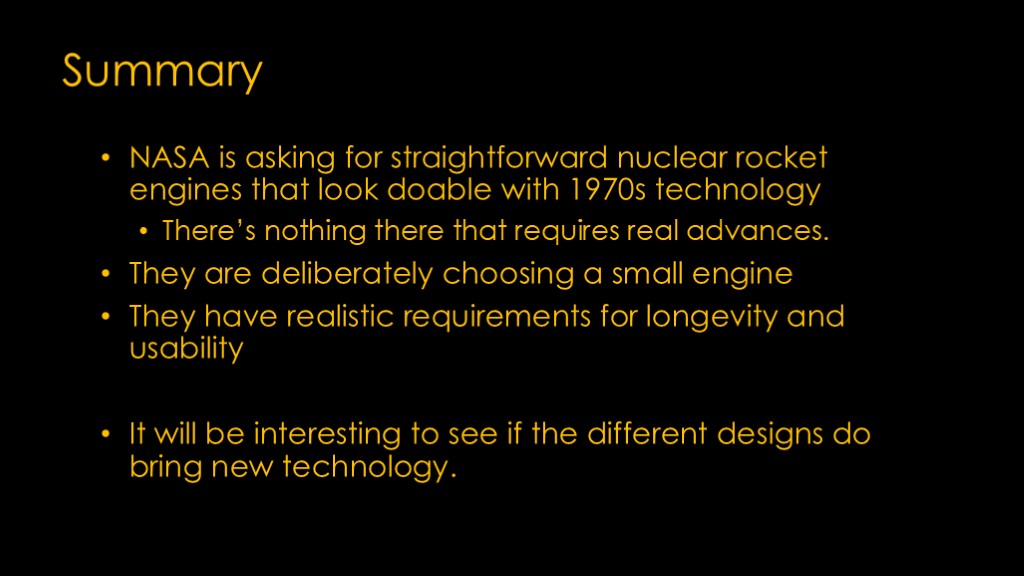

If you enjoyed this video, please help me rhyme "framatome" for a commemorative poem I am writing...